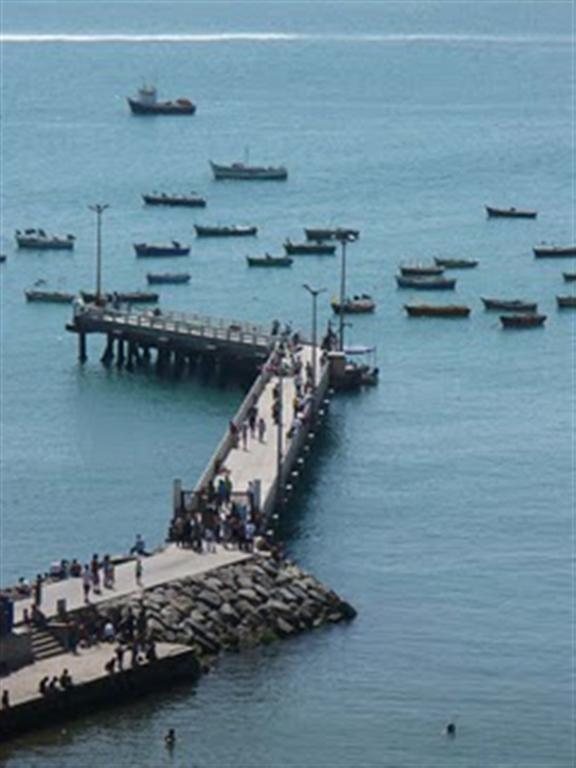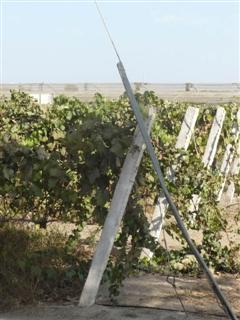=========================================
Subject: Thanks
From: "Noemí"
Date: Monday, May 28, 2007, 6:33 pm
To: opinion@elpiscoesdelperu.com
Dear friends, the video that you sent me is very nice, as are the articles and récipes. Thanks for sharing them. Keep moving forward, as the Pisco bulletin is very interesting and cultural. Sincere greetings, and any suggestion you might have I’d be happy to receive. Your friend, Noemí
Thanks, FRANCISCO
=========================================
Subject: RE: What you missed in May, elpiscoesdelperu.com
From: "Francisco"
Date: Saturday, May 26, 2007, 3:03 pm
To: boletin@elpiscoesdelperu.com
Dear Sirs,
"Pisco is from Peru". Thank you very much for registering me as a user of your bulletin. I am another defender of our Pisco, and have been for many years. I am working on spreading the word about Peruvian Pisco in Germany and the US. Thank you for the news such as that which I receive via your bulletin—it is very useful for me. Soon you will have more news about my activities. Cordial Greetings,
Francisco
Thanks, MANUEL
=========================================
Subject: Subscription
Date: Wednesday, May 23, 2007, 11:55 am
To: editores@elpiscoesdelperu.com
The Bulletin was truly very interesting and entertaining for me. I would like to congratulate you! I would like to be a subscriber. Name: Manuel. Thanks
Thanks, ALBERTO
=========================================
Subject: Greetings!
From: "Alberto"
Date: Sunday, May 13, 2007, 10:55 am
To: opinion@elpiscoesdelperu.com
Congratulations to all of you who have created this website. It is very interesting to learn about many details that we didn’t know about Pisco. I have been living for a long time outside of my dear country (Peru), and what I would like is that you send me the complete and true history of our Peruvian Pisco (as there are many versions). I await your quick reply. Cordial greetings. Alberto P.S. It has to be and will be 100% Peruvian. Cheers.
Thanks, CARLOS
=========================================
Subject: Online Question
Date: Saturday, May 19, 2007, 1:11 pm
To: editores@elpiscoesdelperu.com
----------------------------------
Pisco is from Peru
----------------------------------
Contact information
-----------------------------------
Name : Carlos
Subject : information
Message : Congratulations, this website is fabulous because it spreads the cultura of Peruvian Pisco, which is unique in the world.
===================================
http://www.elpiscoesdelperu.com/boletines/junio2007/07.htm
Thanks, WALTER
=========================================
From: "W@lter "
Date: Sunday, May 13, 2007, 10:58 pm
Friends, thank you very much for the articles. They are very interesting. I would like to thank you for considering me to be a member. I will support the development of many different topics related to our famous Pisco.
Translated by Katrina Heimark
Pisco bilingual magazine
 Don’t miss this interview in “Pisco Gatherings.” This month of June we have interviewed Mr.Carsten Korch, editor of www.livinginperu.com. Mr. Korch is Danish, has fallen in love with Peru and has created the website in English which is dedicated to bringing information on or country to the world. Very interesting!
Don’t miss this interview in “Pisco Gatherings.” This month of June we have interviewed Mr.Carsten Korch, editor of www.livinginperu.com. Mr. Korch is Danish, has fallen in love with Peru and has created the website in English which is dedicated to bringing information on or country to the world. Very interesting! that you will only find in this valley in Arequipa. The sun rises in Caraveli when Don Pedro Ramirez’s melancholy violin changes the mood and gives a festive mystical essence to this colonial tradition in the Chirisco Estate. In the stone winery, under the eunich eyes of the music, the group of eight men stands ready for the first notes with which to begin, with enviable choreography, the traditional stomping of the grapes in the Caraveli valley. Dona Rosa Montoya, patron of the stomping of the grapes and of the Chirisco Bodega, is required by the musical duo (Luis Montoya on guitar) to choose the captain of the stomping. Leoncio Huamani is chosen with three moderate slaps on his backside with grape vines. He has participated for more than twenty years in the folklore of the wine and Pisco and he learned to stomp, he confesses from his father when he was a boy.
that you will only find in this valley in Arequipa. The sun rises in Caraveli when Don Pedro Ramirez’s melancholy violin changes the mood and gives a festive mystical essence to this colonial tradition in the Chirisco Estate. In the stone winery, under the eunich eyes of the music, the group of eight men stands ready for the first notes with which to begin, with enviable choreography, the traditional stomping of the grapes in the Caraveli valley. Dona Rosa Montoya, patron of the stomping of the grapes and of the Chirisco Bodega, is required by the musical duo (Luis Montoya on guitar) to choose the captain of the stomping. Leoncio Huamani is chosen with three moderate slaps on his backside with grape vines. He has participated for more than twenty years in the folklore of the wine and Pisco and he learned to stomp, he confesses from his father when he was a boy.